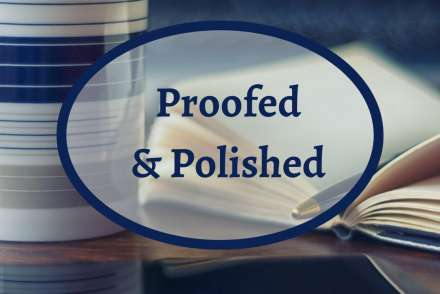
Writing Styles
So, you want to write an article but you don’t know where to start? To make it even more…
April 24, 2025
So, you want to write an article but you don’t know where to start? To make it even more…
April 24, 2025
Do you have difficulty coming up with a title for your article or story? This is sure to be…
February 22, 2025
Do all of your sentences begin with “I,“ “we,” or a proper noun? Do all of them start with…
November 22, 2024
Previously, we talked about the need to vary sentence structure to keep your writing from sounding repetitive. In that…
October 22, 2024
Do all of your sentences sound similar, or are you having difficulty transitioning from one scene to the next?…
August 22, 2024
Have you ever decided to buy a certain product because the packaging assures you that it’s better? I didn’t…
November 10, 2021
What does the title of this article say? Reread it. Did your brain fill in the missing word automatically…
October 10, 2021
Let’s talk about contractions. I mentioned them last month in the context of using apostrophes correctly. Some words that…
September 10, 2021
In elementary school, I distinctly remember doing numerous worksheets on the possessive -s. There would be a list of…
August 22, 2021
Before you send off your precious manuscript to your editor, you probably want to make sure that it’s as…
July 10, 2021
Recently, I edited a PhD dissertation for a literature major which mostly meant that I had to wade through…
April 10, 2021
When I was teaching English Learners in high school, we spent A LOT of time studying subject-verb agreement. I…
March 10, 2021
Each author has their own unique voice. Likely, you’ve spent a lot of time developing the tone and style…
February 10, 2021
As we continue this editing series how we can develop a great story, I hope you’re able to see…
January 22, 2021
Keeping Your Sentences Clear Example #1 “They had such a great time at the amusement park. First, my aunt…
January 10, 2021
Let’s Cut Ourselves Some Slack Adding a little flair to your writing with idioms can be confusing, but hang…
December 10, 2020
To Hyphenate or Not to Hyphenate… How do you feel about hyphens? Do you use them a lot? Never?…
November 10, 2020
Vocabulary Mistakes I’ve been proofreading a pretty wide variety of material lately—master’s dissertations, personal letters to family, freshman film…
October 10, 2020
A Scenario… Finally! You sit back in your chair and breathe a sigh of relief. The project is done,…
September 10, 2020
As we continue this editing series how we can develop a great story, I hope you’re able to see…
May 24, 2020
As we continue this editing series how we can develop a great story, I hope you’re able to see…
April 22, 2020
As we continue this editing series how we can develop a great story, I hope you’re able to see…
March 22, 2020
As we continue this editing series how we can develop a great story by having all the layers in…
February 22, 2020
This is the first post in my editing series in 2020 for how to develop a great story by…
January 22, 2020
In light of the holiday season, here’s a final fun topic in our Punctuation Series: editing commas within independent…
December 22, 2019